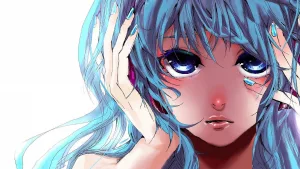Digital illustration refers to the creation of artwork using digital tools and software. Aspiring artists can harness the power of technology to bring their artistic visions to life through digital illustration. With the ability to manipulate elements digitally, artists can explore endless creative possibilities and push the boundaries of traditional art forms. Digital illustration offers a versatile platform for artists to work in various styles, from realistic to abstract, and experiment with different techniques without the constraints of traditional mediums. Embracing digital illustration opens up new avenues for artistic expression and allows artists to reach a global audience through online platforms and social media.
Mastering Software Tools
To excel in digital illustration, it is essential for artists to become proficient in using software programs such as Adobe Photoshop, Illustrator, or Procreate. These tools offer a wide range of features and capabilities that can help artists create stunning and intricate illustrations. From creating intricate line work to blending colors seamlessly, mastering software tools empowers artists to bring their creative ideas to fruition with precision and efficiency.
Essential Software Features
Each software program has unique features that can enhance your work:
- Layers: Use layers to separate different elements of your design, making it easier to edit and adjust individual components without affecting the entire piece.
- Brushes: Familiarize yourself with the variety of brushes available. Custom brushes can create textures and effects that are difficult to achieve manually.
- Adjustment Tools: Utilize adjustment layers and filters to tweak color balance, contrast, and brightness, enabling quick experimentation with different visual styles.
Staying Updated
Moreover, staying updated with the latest software advancements and techniques is crucial for artists to stay competitive in the ever-evolving digital art landscape. Continuous exploration and experimentation with different software functionalities will enable artists to enhance their skills and incorporate innovative digital techniques into their work.
- Online Tutorials and Communities: Platforms like YouTube and Behance offer tutorials that can introduce you to new techniques and software updates. Engaging in forums can also provide insights and solutions to technical challenges.
- Workshops and Webinars: Attend workshops or online webinars hosted by experienced illustrators to learn firsthand about new tools and creative workflows.
Developing Drawing Skills
Even in the digital realm, strong drawing skills are fundamental for creating captivating illustrations. Aspiring artists should continue to hone their traditional drawing techniques while adapting them to the digital medium. Understanding form, perspective, and shading is essential for creating realistic and compelling digital illustrations.
Practicing Digital Techniques
- Digital Sketching: Use a tablet to practice sketching directly onto digital canvases. This helps in getting accustomed to the pressure sensitivity and responsiveness of the digital tools.
- Study Classic Art: Analyze works from traditional artists to understand how they use light, shadow, and composition. Apply these principles in your digital work.
- Gesture Drawing: Regularly practice quick sketches to capture movement and form. This can greatly enhance your ability to create dynamic illustrations.
Importance of Anatomy
Understanding human and animal anatomy is crucial for creating believable characters and scenes. Invest time in studying anatomy through reference books or online courses. This knowledge will give you the confidence to manipulate forms in a way that maintains believability.
Understanding Composition and Color Theory
Composition and color theory play a crucial role in digital illustration. Artists should learn how to effectively use composition techniques to create visually appealing and balanced artwork. By understanding concepts such as focal points, balance, and visual flow, artists can guide the viewer’s eye through the composition and evoke specific emotions or narratives.
Composition Techniques
- Rule of Thirds: Divide your canvas into thirds, both horizontally and vertically, and place key elements along these lines or their intersections.
- Leading Lines: Use lines to draw the viewer’s attention to the focal point of the illustration.
- Symmetry and Asymmetry: Experiment with symmetrical and asymmetrical layouts to find the right balance for conveying your message.
Delving into Color Theory
Color theory is equally important in digital illustration, as colors can greatly impact the mood and tone of an artwork. Artists should familiarize themselves with color harmonies, contrasts, and schemes to create cohesive and impactful illustrations.
Color Schemes and Their Effects
- Monochromatic: Using variations of a single hue can create a harmonious and calming effect.
- Analogous: Colors next to each other on the color wheel can evoke a serene and comfortable feel.
- Complementary: Opposite colors on the wheel create vibrant contrasts that can make elements pop.
By experimenting with different color palettes and combinations, artists can evoke different atmospheres and enhance the visual impact of their work.
Exploring Different Styles and Techniques
Aspiring digital illustrators should experiment with various styles and techniques to find their unique artistic voice. Exploring different approaches to digital illustration can help artists discover new ways to express their creativity and stand out in a competitive industry.
Styles to Explore
- Minimalist Designs: Focus on simplicity and clarity, reducing elements to their essentials to convey meaning.
- Hyper-realistic Renderings: Challenge yourself by creating illustrations that mimic the details and textures of real life.
- Abstract Concepts: Break away from traditional representation and use shapes, colors, and forms to convey emotion and ideas.
Embracing Versatility
Whether it’s exploring minimalist designs, hyper-realistic renderings, or abstract concepts, embracing versatility and diversity in style can lead to artistic growth and innovation. By studying the works of renowned digital illustrators and staying abreast of current trends and techniques in the industry, artists can expand their artistic repertoire and push the boundaries of their creative expression.
- Reverse Engineering: Analyze artworks you admire to understand the techniques and thought processes behind them.
- Trend Analysis: Keep an eye on emerging trends in digital illustration to incorporate contemporary elements into your own style.
Seeking Inspiration and Feedback
Continuous learning and growth are vital for aspiring artists. They should seek inspiration from other artists, attend workshops and conferences, and actively seek feedback on their work to improve their skills and expand their artistic horizons.
Building an Artistic Community
Engaging with a community of artists and receiving constructive critique can provide valuable insights and perspectives that help artists refine their techniques and approach.
- Online Art Communities: Join platforms like DeviantArt or Reddit’s art forums to share your work and receive feedback.
- Local Art Groups: Participate in local art meetups or clubs to connect with fellow artists and attend exhibitions.
Constructive Criticism
Exposure to diverse artistic influences and perspectives can inspire artists to explore new creative avenues and broaden their artistic vision. By cultivating a curious and open-minded attitude towards learning, aspiring artists can continuously evolve and adapt their artistic practice to stay relevant and innovative in the dynamic world of digital illustration.
- Active Listening: Approach feedback with an open mind, focusing on areas for improvement rather than taking criticism personally.
- Iterative Process: Use feedback to make iterative improvements, showing progression and adaptability in your work.
Cultivating Patience and Perseverance
Becoming proficient in digital illustration takes time and dedication. Aspiring artists should cultivate patience and perseverance, understanding that mastering the fundamentals of digital illustration is a journey that requires commitment and hard work.
Overcoming Challenges
Progress in digital illustration may not always be linear, and artists may encounter challenges and setbacks along the way. However, by embracing a growth mindset and viewing obstacles as opportunities for learning and growth, artists can navigate through challenges with resilience and determination.
- Learning from Mistakes: Treat each error as a learning moment rather than a failure.
- Mindfulness Practices: Incorporate mindfulness techniques to manage stress and maintain focus during frustrating periods.
Setting Goals
Developing a consistent practice routine, setting achievable goals, and staying motivated are essential strategies for aspiring artists to progress in their digital illustration journey and achieve their artistic aspirations.
- Daily Practice: Dedicate time each day to drawing, even if only for a short period, to build and maintain skills.
- Goal Setting: Break down your long-term aspirations into manageable goals with clear milestones.
Celebrating Small Wins
Acknowledge and celebrate small achievements along the way. Recognizing progress, no matter how minor, can motivate and reinforce your commitment to becoming a skilled digital illustrator.
By exploring these expanded insights and practical tips, aspiring digital illustrators can deepen their understanding of the craft, refine their skills, and find their unique path in the vibrant world of digital art.



